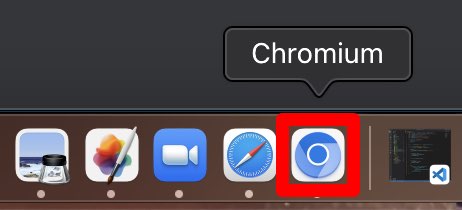Browser
Understand what the Browser object is in Puppeteer/Playwright, how to create one, and a bit about how to interact with one.
In order to automate a browser in Playwright or Puppeteer, we need to open one up programmatically. Playwright supports Chromium, Firefox, and Webkit (Safari), while Puppeteer only supports Chromium based browsers. For ease of understanding, we've chosen to use Chromium in the Playwright examples to keep things working on the same plane.
Let's start by using the launch() function in the index.js file we created in the intro to this course:
- Playwright
- Puppeteer
import { chromium } from 'playwright';
await chromium.launch();
console.log('launched!');
import puppeteer from 'puppeteer';
await puppeteer.launch();
console.log('launched!');
When we run this code with the command node index.js, a browser will open up; however, we won't actually see anything. This is because the default mode of a browser after launch()ing it is headless, meaning that it has no visible UI.
If you run this code right now, it will hang. Use control^ + C to force quit the program.
Launch options
In order to see what's actually happening, we can pass an options object (Puppeteer, Playwright) with headless set to false.
- Playwright
- Puppeteer
import { chromium } from 'playwright';
const browser = await chromium.launch({ headless: false });
await browser.newPage();
import puppeteer from 'puppeteer';
const browser = await puppeteer.launch({ headless: false });
await browser.newPage();
Now we'll actually see a browser open up.

You can pass a whole lot more options to the launch() function. We'll be getting into those a little bit later on.
Browser methods
The launch() function also returns a Browser object (Puppeteer, Playwright), which is a representation of the browser. This object has many methods, which allow us to interact with the browser from our code. One of them is close(). Until now, we've been using control^ + C to force quit the process, but with this function, we'll no longer have to do that.
- Playwright
- Puppeteer
import { chromium } from 'playwright';
const browser = await chromium.launch({ headless: false });
await browser.newPage();
// code will be here in the future
await browser.close();
import puppeteer from 'puppeteer';
const browser = await puppeteer.launch({ headless: false });
await browser.newPage();
// code will be here in the future
await browser.close();
Next up
Now that we can open a browser, let's move onto the next lesson where we will learn how to create pages and visit websites programmatically.